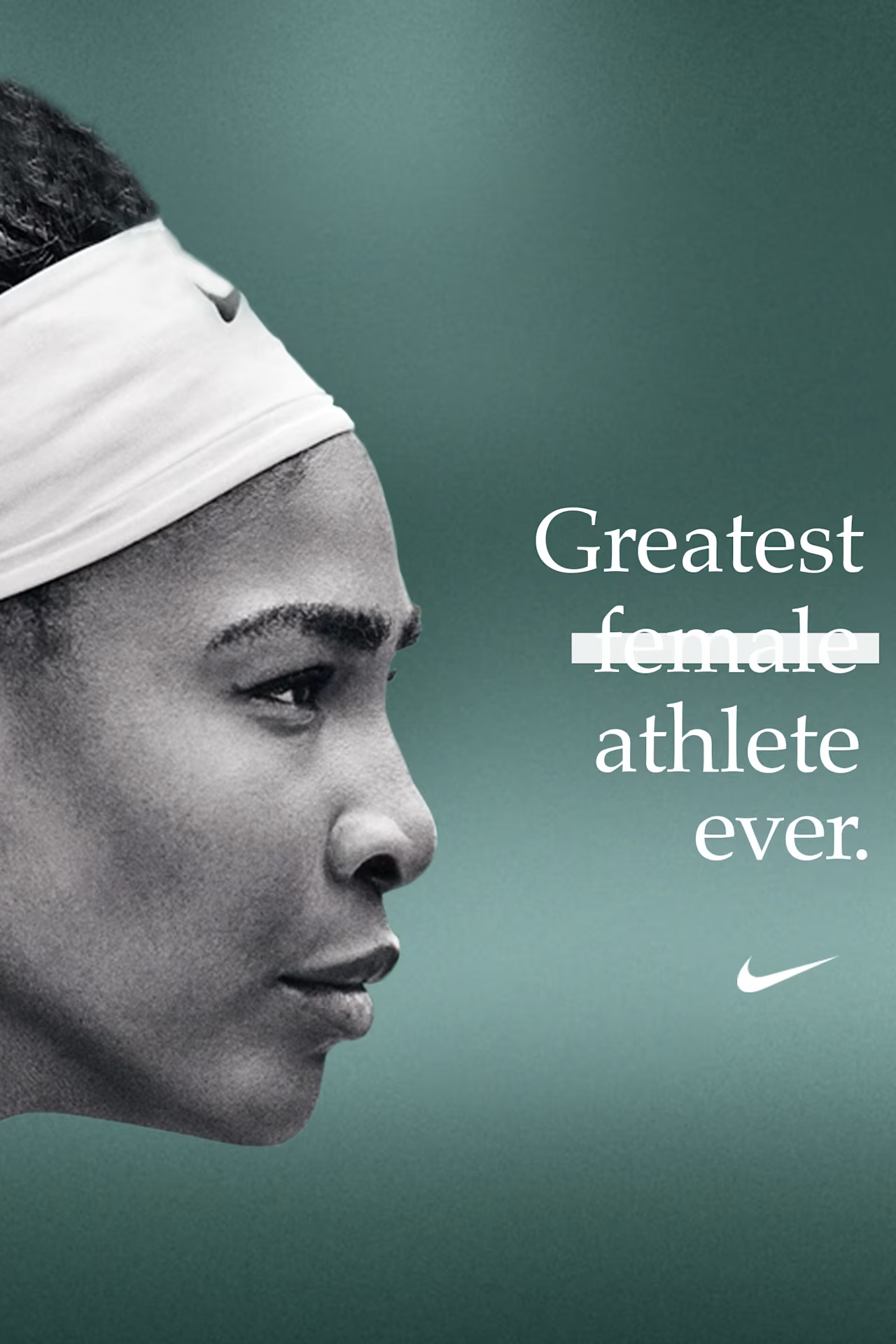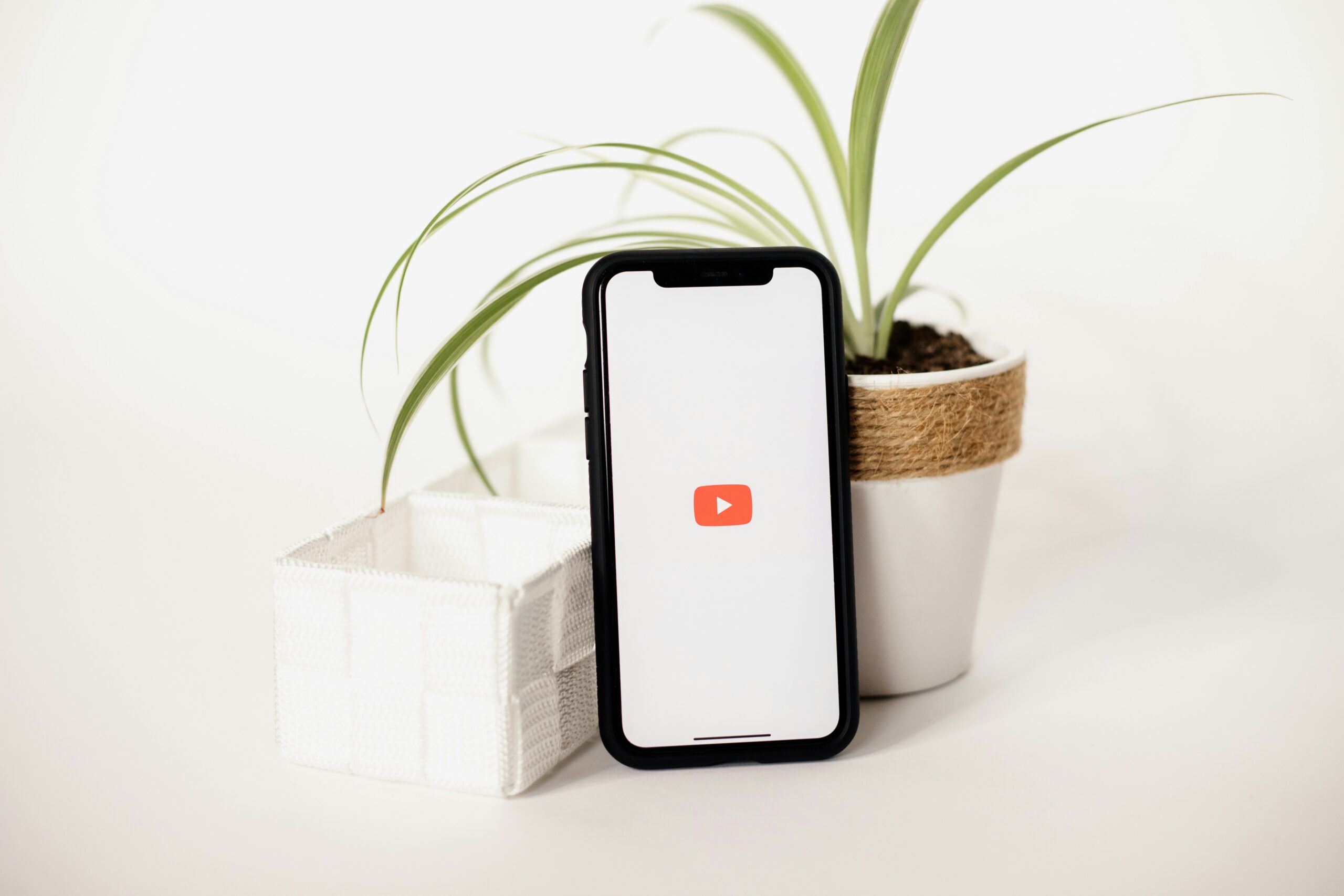Brand Ambassador or Brand Liability?
In recent years, the word influencer has become part of everyday language. Influencers are popping up across all industries like mushrooms after the rain and new ones appear daily. In marketing, it sometimes feels like if a brand doesn’t work with an influencer, it might as well not exist. But there’s a catch: many influencers promote multiple competing brands at the same time, which significantly reduces the effectiveness of these partnerships. As a result, audiences often fail to associate them with any one brand.
That’s where brand ambassadors come in. Not the kind who post once for a fee and move on to the next client, but those who genuinely believe in a brand and maintain a long-term connection with it. While influencers are great for reach, ambassadors bring trust—and no brand can survive today without trust. A well-structured brand ambassador program can be a valuable addition to your communication strategy—if you know how to set it up and what pitfalls to avoid.
In this article, we’ll break down what brand ambassadorship really involves and how it differs from influencer marketing. We’ll explore why this approach can be a great move for brands and also what can go wrong. Many companies tend to overlook their most important audience: loyal customers. It’s true that in brand awareness campaigns, they’re not the first priority. But they’re often the ones with the greatest potential to become true brand ambassadors.
What Does Brand Ambassadorship Involve?
A brand ambassador is typically someone who knows the brand well, has firsthand experience with it, and supports it even outside of paid campaigns. They use the brand’s products or services regularly, understand them in depth, and can speak about them with genuine authenticity. The role itself can take many forms — sometimes it’s a celebrity, other times a loyal customer. What matters most is that the partnership isn’t random but built on a relationship that benefits both sides.
Unlike influencers, ambassadors usually represent only one brand within a given category. Their goal isn’t broad reach, it’s depth. Ambassadors have a stronger bond with the brand and often participate in a wider range of activities—from product testing to providing internal feedback.
The key difference lies in the overall approach: influencers function as a marketing channel, while ambassadors are part of the community. An influencer speaks to the audience; an ambassador speaks from within it. And audiences are becoming increasingly skilled at telling the difference between what’s real and what’s staged.
Some examples? Internationally, think George Clooney and his long-term partnership with Nespresso, Serena Williams for Nike, or Zendaya for Lancôme. In the Czech Republic, examples include Lukáš Krpálek for Under Armour or Klára Vytisková, who has worked with several local design brands.
Audiences expect brands to be meaningful and authentic—and if they sense that an ambassador is just "playing a part," the effect is lost. That’s exactly why this model is becoming more sought-after—not because it offers greater reach than influencer marketing, but because its impact tends to be deeper and longer-lasting.
Photo by Collabstr on Unsplash
Why It (Can) Work
Let’s take a look at some of the key benefits a brand ambassador program can offer.
One of the biggest advantages is the previously mentioned authenticity. People are more likely to trust someone who genuinely knows and uses a brand long term. An ambassador with a strong personal story can feel far more authentic than any claim made in an ad campaign.
But it’s important not to overlook another key benefit: reach. Especially when an ambassador is part of a specific community or has their own follower base. Ambassadors often connect the brand with people who would be difficult to reach through traditional advertising—spreading brand awareness in an organic, hard-to-replicate way.
The third major benefit? Longevity. While a one-off influencer partnership can fade quickly, an ambassador stays with the brand longer—building it consistently across seasons and media.
As the platform MarketingWeek notes, ambassadors aren't a commodity—they’re a indicator. If a brand naturally attracts people who genuinely want to represent it, that’s a sign it’s doing something right. In that sense, ambassadors aren’t just “the face” of a campaign—they’re a real asset.
What If It Doesn’t Work Out?
It all sounds great in theory—a brand finds someone who truly loves it, and that person spreads the word. But reality is often more complicated. If a brand ambassador program is poorly executed, it can do more harm than good.
One of the most common and critical mistakes is choosing the wrong ambassador. And it’s not just about someone who doesn’t “fit the feed.” The real issue arises when the ambassador doesn’t align with the brand’s values or when their public image invites unnecessary controversy. Consistency and trust are key. If the ambassador is seen as just another hired face rather than a genuine fan, both authenticity and the impact of the partnership go out the window.
Another frequent problem is short-term campaigns without deeper connection. Brand ambassadors aren’t influencers for one-off Instagram stories. Worse yet is when those stories are followed by similar ones for other brands—especially if the ambassador is representing multiple brands at the same time. Some people “influence” across dozens of campaigns, but when the same face shows up in four different ads within a month, credibility and exclusivity suffer. Even more so on a small market like ours.
That’s why brands need full awareness of who else their ambassadors are working with. This ties into another common pitfall: a lack of control over communication. Yes, authenticity means letting ambassadors speak in their own voice. But if a brand doesn’t monitor how that voice reflects on them, things can easily go sideways. Without clear guidelines and expectations, messaging can become inconsistent or even damaging to the brand.
And finally, there’s one major issue that doesn’t get discussed enough: the absence of strategy. Launching an ambassador program without clear goals, measurable KPIs, or a solid plan is a recipe for failure. Ambassadors need to be meaningfully involved. It’s not enough to pick someone, send them a product, and hope for miracles.
Photo by Franck on Unsplash
When It Works—And When It Really Doesn’t
As with most things in marketing, the best way to illustrate a point is through real-world examples. Here are two stories with the same goal, but dramatically different outcomes.
Serena Williams x Nike
Serena Williams is an American tennis legend. She stands for strength, perseverance, and breaking boundaries—all values that Nike has consistently promoted and communicated over the years. Their partnership spans more than 20 years, and it’s not just about ad spots with catchy slogans. Together, they create powerful narratives that resonate—like the “Never Done Evolving” campaign, in which Nike used AI and machine learning to simulate a match between 17-year-old Serena from 1999 and 35-year-old Serena from 2017. The campaign highlights her evolution as an athlete and showcases how her game has developed over time.
Nike doesn’t partner with Serena just because she’s famous, but because together, they tell a story that makes sense for both sides. Authenticity, longevity, and a natural brand connection. This is what it’s supposed to look like.

Gal Gadot x Huawei
On the flip side, there’s the infamous case where a brand-ambassador partnership went spectacularly wrong. Actress Gal Gadot, serving as a brand ambassador for Huawei, promoted the new Mate 10 Pro on her Twitter account. The problem? Observant followers quickly noticed that the tweet had been posted from an iPhone.
The incident spread rapidly across social media, drawing ridicule and criticism. Gadot later stated that the post had been published by a member of her team, not by her personally. Still, the digital footprint remained and the situation highlighted the critical importance of maintaining control over ambassador communications.
Brand Ambassador or Brand Liability?
Working with a brand ambassador can be a powerful tool but only in the hands of a brand that knows what it’s doing. Otherwise, it’s just another fleeting social media collaboration that no one remembers a week later. A successful ambassador program requires strategy, long-term commitment, and most importantly, a carefully chosen face—someone who genuinely believes in the brand and can represent it with authenticity and credibility.
As mentioned earlier, ambassadors are a signal—evidence that your brand is doing something right. When you attract people who genuinely want to represent your brand, the audience is far more likely to respond positively. If your brand has a clear vision, it naturally draws in people who resonate with it. Not because they’re paid to, but because they see themselves in its philosophy. These are people who would use your product even without a campaign and that’s exactly why their support feels so real and resonates more deeply than typical influencer endorsements.
To make it work, you need to build relationships with ambassadors—give them space, but also set clear boundaries. Ideally, you want a long-term partnership, because only time will show whether the collaboration holds up beyond seasonal campaigns. An ambassador relationship can’t rest on a name alone. It has to be built on shared values, audience alignment, and real-life relevance. Otherwise, it might go viral—for all the wrong reasons.
Still convinced brand ambassadorship is right for your brand? Then we wish you the best of luck.
But if you're just looking for a “quick promo,” you might want to think twice. Without a solid strategy, long-term vision, and the right match, you risk damaging trust rather than building it. In that case, classic advertising—or a well-structured influencer campaign—might be a better fit.
Podcast: Is It Worth It for Every Brand?
Podcasts have become a popular audio format offering listeners a wide range of engaging topics. Brands have joined in too, using podcasts to connect with their target audience and build community. But is this format suitable for every brand? In this article, we’ll explore the advantages and challenges of podcasting in online marketing—and find out who stands to benefit and who might want to think twice.
Let’s start with a few numbers…
So what does the podcast landscape look like in the Czech Republic? Podcasts are becoming an increasingly popular medium. According to a 2023 study by Czech Radio, more than half of internet users aged 15 to 70 (54%) listen to podcasts regularly—one of the highest rates in Europe. These figures suggest that this format isn’t going anywhere anytime soon.
When it comes to listener demographics, the largest share belongs to young people aged 15–24, with up to 72% of them regularly tuning into podcasts. Interest gradually declines with age, but even in the 45+ age group, over 40% still listen. Podcasts are also especially popular among men, university-educated individuals, and those living in larger cities with higher incomes.
Although podcasts have been around for some time, recent years have seen a rapid increase in new listeners. In 2023 alone, around 20% of all podcast users were new listeners. This growth is likely to continue, driven by the increasing accessibility of smartphones, mobile internet, and the availability of podcasts across platforms.
For brands, this represents a major opportunity. While younger generations still make up the core listener base, podcasts are becoming increasingly relevant to a broader audience. This opens the door not only for creative and thematic links between podcasts and purchase opportunities but also for building strong, long-term relationships with listeners. The key is offering valuable content that connects meaningfully with a brand’s products or services—otherwise, there’s a risk the podcast won’t be effective, especially for brands with a lower level of spontaneous purchase behavior.
Looking ahead, the growth of podcasting is expected to continue—making it a chance for brands to reach wider audiences, boost visibility, and strengthen customer loyalty. That’s why it’s essential for brands to focus on high-quality content that aligns with the needs and expectations of their target audience and use this format to build a strong and engaged community.
Photo by Jonathan Farber on Unsplash
How Can Podcasts Benefit Brands?
Thanks to their flexibility, personal connection, and long-term content value, podcasts can be a powerful tool for brands to build lasting relationships with their audience. So what are the main advantages podcasting offers?
Strong reach within the target group at a reasonable cost is a key factor for many brands. Podcasts have the ability to reach highly targeted and engaged audiences. This goes hand in hand with authentic connection—the tone of voice and storytelling format can create a strong emotional bond, something that visual content on social media or blog posts often can't replicate. Podcasts also allow brands to prioritize key themes and steer the direction of their brand narrative.
Another advantage is higher engagement. Podcasts tend to attract active listeners who deliberately choose what to listen to. This increases the chances of interaction and positive feedback. Contributing to this is the non-intrusive nature of the content—unlike traditional advertising, podcasts offer value-driven content rather than overt sales pitches, which helps build trust in the brand. Their accessibility and flexibility also mean listeners can tune in anytime, anywhere—during commutes, chores, or workouts.
Podcasts also provide a variety of monetization and advertising opportunities. Brands can promote products or services within episodes, often in a way that feels far more natural and integrated than in other digital media. With multiple formats available, every brand can find an approach that suits its message and tone.
Finally, it’s important to mention the long-term shelf life of podcast content. Each episode remains accessible after it’s published, which means it can continue attracting new listeners and delivering value long after its initial release.
What’s the Catch?
While podcasting offers many benefits, there are also challenges that brands should carefully consider before making it part of their online marketing strategy.
Production and time demands can be an issue, especially if the brand lacks internal resources or external partners to create high-quality content. Beyond recording and editing, podcasting also requires consistent publishing—which means planning, coordination, and time. This isn’t a one-time investment, and for brands with limited budgets or small teams, it can become a significant obstacle.
There’s also no immediate return on investment. Podcasting is a long-term strategy that takes time to build an audience and earn listener trust. This process can take several months. So if a brand’s marketing goals are short-term, launching a podcast likely isn’t the right move.
Measuring effectiveness and ROI can also be more difficult. Unlike PPC or other digital channels where conversions and direct outcomes are easily tracked, podcasts offer limited insight. While listens and engagement can be measured, the link between listening and actual purchase isn’t always clear or consistent.
With podcasts gaining in popularity, competition is intensifying. As more brands launch their own shows, it’s harder to capture and retain audience attention. If the content isn’t high-quality, unique, or relevant, it risks being lost in a sea of similar offerings. Standing out requires not only great content but also targeted promotion and a smart distribution strategy.
Lastly, if a brand doesn’t have a clearly defined way to link podcast content to specific buying situations, its show may have little impact on conversions. This is especially relevant for brands selling impulse-driven products, like those in the FMCG sector, where purchase decisions are often quick and emotional—not driven by in-depth content consumption.

…So Is Starting a Podcast a Good Idea?
If you’re a small brand, launching your own podcast might not be the best move—at least not yet. Especially in local markets like the Czech Republic, where established shows dominate with real-life stories, educational content, or news, breaking into the top ranks is extremely difficult. Even for large brands, podcasts are not an automatic path to success. If they fail to produce high-quality content that meaningfully connects their products or services to topics people truly care about, their podcasts can easily fade into obscurity.
That said, you shouldn’t ignore podcasting altogether. Podcast advertising is worth considering. A study by ARN Neurolab titled "Intimacy Never Sounded So Good" showed that podcast ads are perceived as up to 30% more trustworthy than ads on social media.
Instead of building a podcast from scratch, a more effective strategy may be to partner with already established and popular shows as a platform for promoting your products or services. For brands with limited budgets or short-term campaign goals, podcast ads offer an attractive alternative to traditional digital ad formats.
JINGLE: The Secret Weapon Everyone Forgets
There are many tools available to compete in the digital marketing arena. Every brand should define itself through a set of distinctive elements that shape its identity—such as its logo, fonts, colors, and more. One of these elements, though often overlooked, is the jingle.
A jingle, or advertising tune, is a short, catchy melody commonly used in radio, television, or online. An ideal jingle is memorable, rhythmic, and sonorous—so that the brand or product instantly comes to mind whenever the tune is heard by a potential customer.
So what are the characteristics of a jingle that guarantees success?
An unforgettable and catchy melody is always a safe bet. If it carries an upbeat and energetic tone, the audience is likely to respond positively. Instrumentation—or the choice of musical instruments—can further emphasize the uniqueness of the jingle. Complex musical arrangements aren’t always necessary; sometimes just a few distinct notes, paired with well-chosen sound effects, are enough to make it stand out.
If a jingle is paired with a simple and memorable line or slogan that reinforces the brand’s core message or positioning, the effect can be powerful. A perfect example is McDonald’s iconic jingle with the line: I’m lovin’ it. Incorporating the brand name, logo, or other distinctive elements into the lyrics can be just as effective. A clear and compelling call to action (CTA) can also work well, directly encouraging the audience to take specific steps—such as making a purchase or visiting a website.
The overall tone of the jingle should match the brand's image and resonate with the target audience. The mood can be upbeat, fun, emotional, or humorous. Opting for a sad or melancholic jingle is generally a poor choice—while it might be original, associating the brand with negative emotions is rarely advisable. Jingles have been a staple of advertising across media for decades, which gives them a strong nostalgic appeal today. Many consumers fondly recall jingles from their childhood. Hitting the “right note” can create a powerful emotional connection between the listener and the brand. Nostalgia can be used to craft jingles that evoke familiarity and comfort—leading to more positive brand associations.
As for jingle length, there’s no fixed rule or formula for success. The key is brevity and memorability. Some musical ideas need just a few seconds to evoke the desired emotion; others may take up to a minute. The ideal length typically depends on the planned use of the jingle. Imagine if the Netflix intro lasted 16 seconds and played before every episode on the platform—it would likely become irritating after 20 episodes.
That’s why a jingle must adapt to the specific marketing channel. If it’s intended for broader use, it should be flexible. Netflix, for instance, commissioned a special version of its intro for feature films in theaters. The result is a 16-second orchestral version composed by Hans Zimmer—dramatic and cinematic, designed specifically for the big screen.
The Jingle as a Winner
So what gives jingles an edge over other brand elements? You’ve probably experienced this many times—a song gets stuck in your head, and it pops up again during random moments. That’s exactly the purpose of a jingle. Because they’re short and distinctive, they’re much easier to recall in connection with a brand.
One of the main goals of advertising is to leave a lasting impression on the consumer. Jingles are incredibly effective in achieving this due to their innate memorability. They rely on repetition, rhyme, and melody to create a catchy tune that’s hard to forget. A well-crafted jingle can linger in the listener’s mind long after the ad has ended.
Another strength lies in their uniqueness. Unlike most brand elements—which are primarily visual—jingles use sound to set the brand apart, even in an oversaturated market. Of course, there are limits: you can’t exactly play a three-second jingle on a city billboard 24/7. But otherwise, jingles are highly versatile and can be widely used across various digital channels.
And perhaps the best part? Unlike a logo—which has fixed rules like moodboards, fonts, and color guidelines—a jingle can evolve and adapt to different marketing campaigns. This provides flexibility and cost-effectiveness in brand communication. A great example is Hyundai’s jingle: the melody stays consistent, but its execution changes from campaign to campaign. Each version feels fresh, yet the core remains recognizable.
Conclusion
Jingles remain a powerful marketing tool thanks to their ability to create emotional connections, enhance memorability, strengthen brand identity, adapt across platforms, and evoke nostalgia. Still, it’s important to weigh both the advantages and potential limitations of jingles when planning advertising campaigns. A well-crafted and strategically used jingle can have a significant impact on brand awareness and long-term success.







